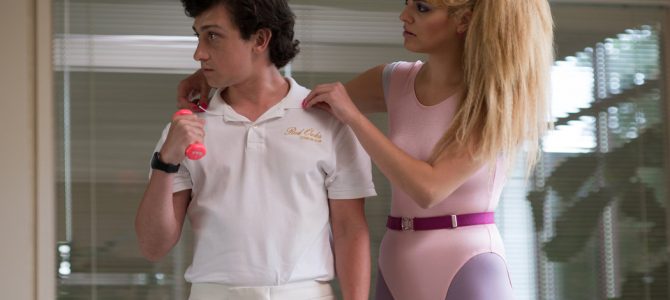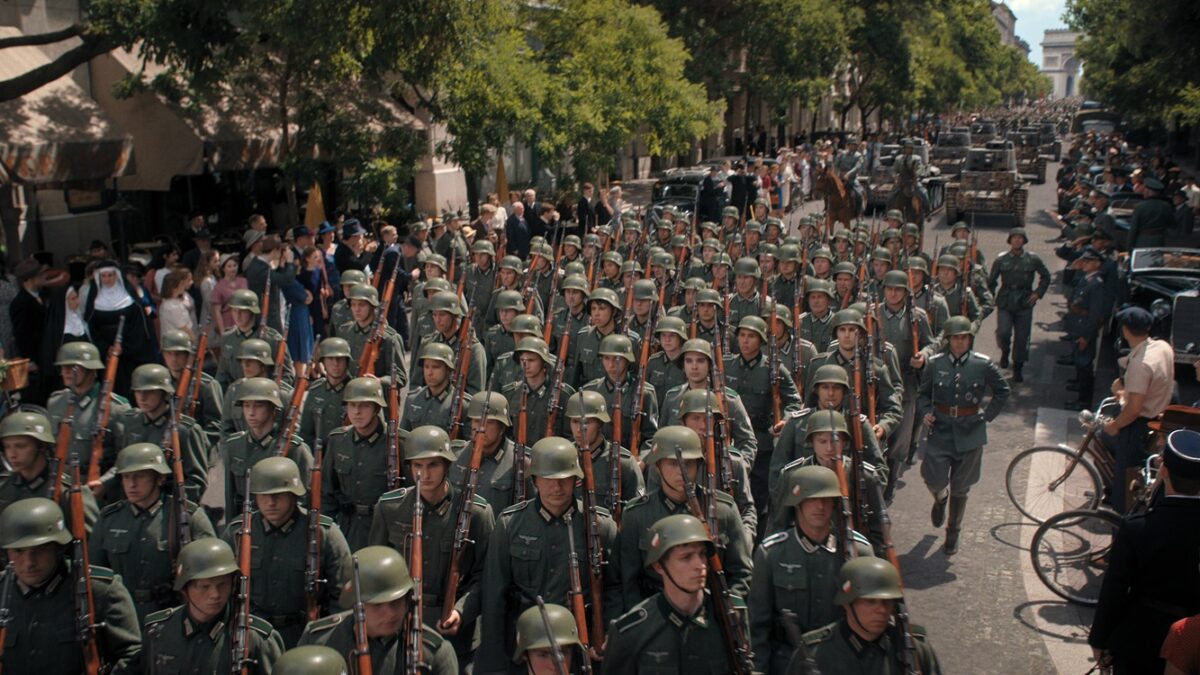
The Amazon original series “Red Oaks” is to 1980s comedies as “Stranger Things” is to the decade’s science fiction films: an entertaining homage that avoids over-relying on references and cultural signals, and instead focuses on complex characters and good writing. Its second season, released earlier this month, offers more than just a reheated version of its predecessor—which is more than you can say about most ’80s movie sequels. At the same time, it lacks the emotional resonance that made the first season stand out.
The show’s first season focused on the love life of David Myer (Craig Roberts), a college student who spends the summer of ’85 as a country club tennis pro, drifting apart from his girlfriend Karen (Gage Golightly, if that is her real name) and toward Skye (Alexandra Socha), an artistic rebel who, in the sort of clique-conscious complication that John Hughes built his career on, is the daughter of the club’s president and one of David’s tennis pupils (Paul Reiser).
Meanwhile, David’s parents (Richard Kind and Jennifer Grey) are on the verge of divorce, and his best friend Wheeler (Oliver Cooper) deals drugs and pines over a girl with a terrible approximation of a Jersey accent (Alexandra Turshen). The cast of wacky secondary characters includes the charming but scheming head tennis pro Nash (Ennis Esmer, delivering the show’s best performance) and Karen’s new love interest Barry (Josh Myers), a man so sleazy, with a bushy mustache and feathered hair so cheesy, he’d make Quagmire blush.
Establishing Independence from the 1980s
The first season was occasionally too goofy with its ’80s sources. Case in point: the notorious body-swap episode, a silly one-off that broke the show’s contract with its audience. Otherwise, “Red Oaks” has the sort of raunchy humor you’d expect from “Porky’s,” as well as elements from more serious movies like “Say Anything.” This is especially true of the storyline involving Reiser’s character, a Wall Street Master of the Universe charged with white-collar crimes; even his daughter’s name is an echo of the lead actress in “Say Anything,” Ione Skye.
Then there’s the music. Whereas most shows set in the past establish their setting by rehashing overplayed hits from the period, “Red Oaks” (like “Stranger Things”) delves into deeper cuts. The second season starts with an obscure OMD track and ends with a forgotten song by The Call. The Call! The only people born since 1990 who know The Call were forced to attend Al Gore’s presidential campaign rallies. (To be read in Bob Saget’s “How I Met Your Mother” voice: Kids, The Call was once considered America’s answer to U2—socially conscious rockers who wrote sweeping, sometimes explicitly Christian songs that were mix-tape staples back in the day.)
The second season’s premiere also establishes its independence from the ’80s, and the preceding season, in a couple of subtle ways. First, instead of leaping right to the next summer at the country club, we find David visiting Paris for New Year’s ’86. It’s a good palate cleanser before the show returns to New Jersey. The cinematography of the first episode is also a departure: the hand-held camera is unsteady, the editing is abrupt and clipped, techniques that make clear you’re watching a modern show that happens to be set in the ’80s. But don’t worry, it’s not too highbrow—David is hiding naked behind a sofa before long.
Shifting Concerns of Workaday Americans
The new season departs most drastically from last season—for better and worse—by subordinating its romantic plotlines to more workaday concerns. One of the most interesting storylines is David’s decision whether to return to college or start a career—and if the latter, which and where.
David’s father, frustrated that his son can’t choose a path in life, complains to his ex-wife: “That’s the thing with their generation. They don’t want careers, they want callings. It’s not enough to get a paycheck. …Y’know what it is? They never fought a war. . . . When I came back from Korea, I was happy just to have a job where nobody was shooting at me.”
Skye’s father offers David similar advice: “Happy is how you feel when you go to your kid’s dance recital. Or you see McEnroe swearing at a line judge. That’s happy. It’s not something you expect from your work. Why do you think they call it work? They don’t call it chuckles. Because it doesn’t make you happy.”
These are good points: most people will find the greatest happiness in their lives outside of work. But David’s father has never been much of a role model, Skye’s father is in serious legal trouble for his work, and neither man seems particularly happy at all. It’s hard to blame David for not taking their advice seriously.
David and Skye also have to make choices about their respective arts. Skye, back from a semester in Paris studying painting, is crushed when she’s told “There’s an emptiness to your work. They’re like cadavers.” Meanwhile, she wants to make David seem more cutting-edge than he is: instead of a guy who films brises and weddings, she describes him as an avant-garde artist like her new friend, a bartender in the city who exhibits a video installation of flushing toilets. “It takes Duchamp’s ‘Fountain’ to a whole ‘nother level,” Skye says.
For his part, David finds good work at a cable access station run by the marvelously creepy John Hodgman. The unpretentious, glamour-less job offers David a necessary base for his film projects, and he feels much more comfortable there than with Skye’s friends.
A Bit Short on Emotion
Despite these compelling conflicts and storylines, the second season lacks the strong emotional pull of season one. David is too much like Kevin Arnold from “The Wonder Years.” The same puzzled expression, the same subdued responses, and the same lack of convincing intensity. I half-expected Daniel Stern’s voice to say, “at that moment, I realized….”
That mattered less last season because David had clear interest in Skye and struggled to leave Karen. This season, their relationship has less drama. They have fun, they have fights, they have sex, they have things in common—but they don’t have much personal conflict. Skye’s most powerful scene is when she reacts, alone, to the art professor’s harsh criticism, and their most intense scene as a couple is an argument over their careers.
The characters who experience the most pain are secondary ones. Nash suffers the most heartbreak of all, though it’s difficult to tell whether his affection for a new widow is sincere or just another attempt to establish himself in the country club. Besides, his romantic rival is Mark Linn-Baker from “Perfect Strangers”—how could you not root for Cousin Larry? The plot involving Reiser’s character also has great dramatic potential, but because Skye doesn’t react strongly to her father’s fate, the viewer isn’t likely to, either.
None of this is to say that the new season of “Red Oaks” isn’t worth binging on like Christmas pudding. It’s still a very good show. Yet in its laudable aversion to cheap nostalgia, I wonder if it also avoids well-earned emotion.









